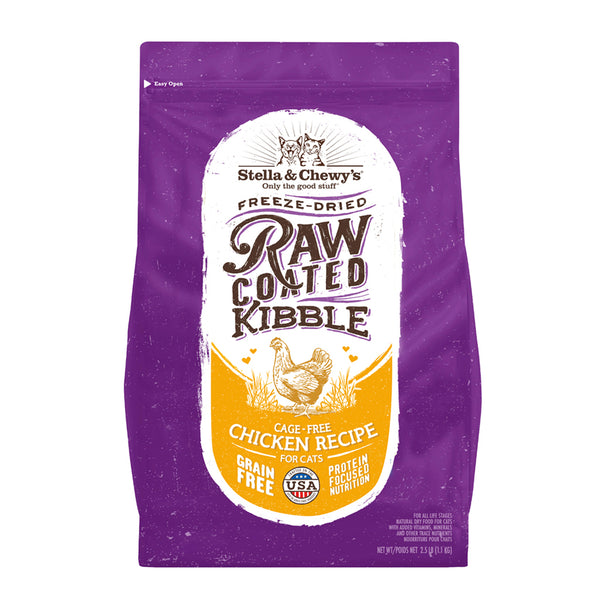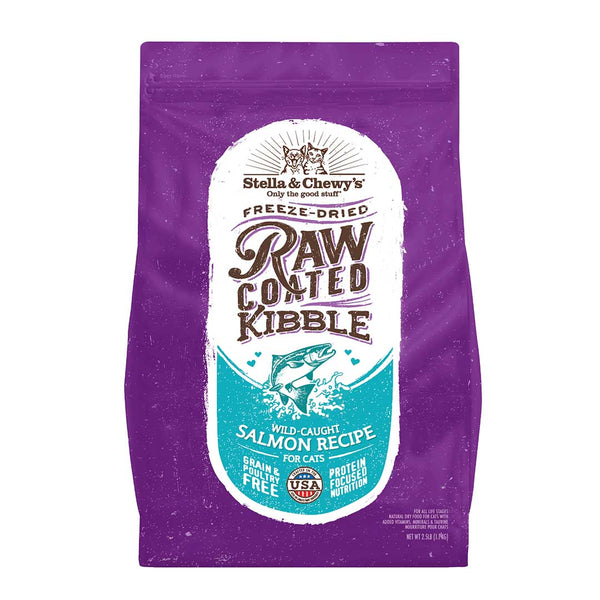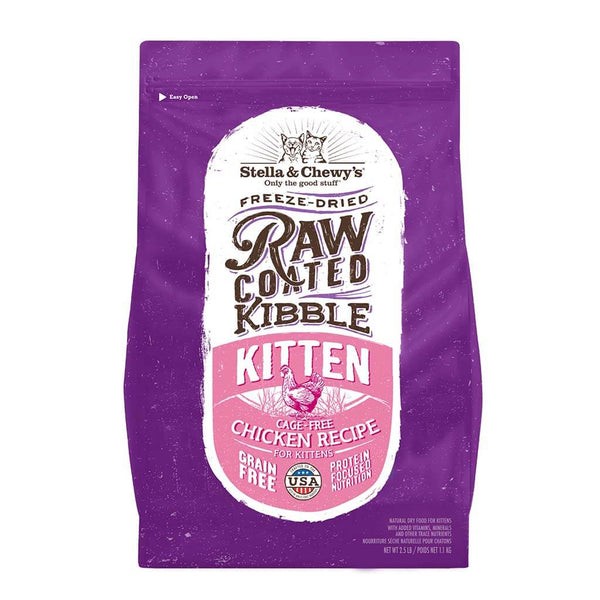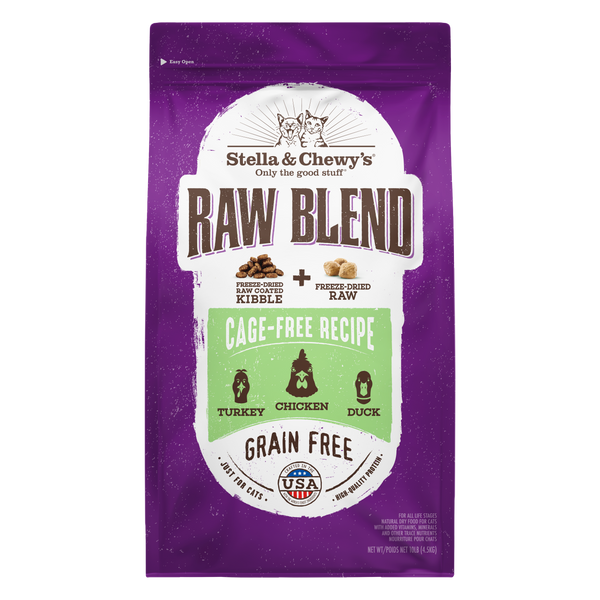By Ally Norton/Read Time: 5 min
Read Time: 5 min
We all want the best for our cats, but it can be difficult to know what is right for them in terms of nutrition. Sometimes the struggle is just to find a food they will eat! A quality, complete and balanced diet from Stella & Chewy's is beneficial to cats in many ways, including improved coat, proper weight maintenance and overall health. We’ll take you through the steps on how to transition your cat to Stella & Chewy’s.
Why Should You Change Your Cat to Stella & Chewy’s?
Whether you’ve just adopted a new cat, or you are looking to improve your current cat’s diet, there are so many reasons to choose Stella & Chewy’s. With best-in-class nutrition and a variety of complete and balanced diets to choose from, including freeze-dried raw dinner morsels and meal toppers, frozen raw cat food, wet food, and kibble, we’re happy to offer cats premium food options where meat is always the number one ingredient.
1. Cats are Obligate Carnivores
Did you know that cats are "obligate carnivores," meaning that meat is not just what, but all that they need to thrive? You read that right! According to veterinarian Dr. Angie Krause, "cats don’t have any real dietary requirement for carbohydrates," so the best thing to feed them is "wet food or a balanced raw diet."
2. Stella & Chewy's is Purrfect for Picky Eaters
With over 2 million persnickety pets turned into regular bowl-cleaners, Stella & Chewy's has tons of tried-and-true recipes that your picky eater is sure to adore.
3. Stella & Chewy's Helps with Weight Management
Over 60% of cats in the USA are overweight. Help your cat feel their best again with nutritious weight management recipes, made with real raw ingredients and protein-rich formulas that make managing their weight delicious and easy.
4. Stella & Chewy's is Great for Cats with Allergies
Your furry friend deserves to enjoy mealtime without discomfort! Our novel protein recipes give sensitive kitties all the flavor and nutrition they need, without the common allergens they don't.

How to Transition Your Cat to Stella & Chewy's
When it comes to transitioning to any food, a slow transition over 7-10 days is recommended. To start, we recommend mixing the new food in with what you’re currently feeding and slowly building up until the new food is the sole food that you’re feeding/that your cat is enjoying. Even if your cat isn’t eating their current diet, it’s important to start off small with new food and introduce it slowly, as sudden changes to diet can cause digestive issues. So, how exactly can you do this?
Introducing a new food or new food type (like raw) too quickly can lead to stomach upset or diarrhea. Your cat may also need some time to get used to a new texture if they’re used to eating dry kibble.

Days 1-3: Mix 75% of the old food with 25% of the new raw food.
Days 4-6: Mix 50% of the old food with 50% of the new raw food.
Days 7-9: Mix 25% of the old food with 75% of the new raw food.
Day 10: Feed 100% of the new raw food.
If your cat experiences any digestive issues, you can extend the transition over a longer period of time. Every cat is unique, so the transition to a raw diet could go easily or take a bit longer. If your cat won't eat 100% raw food, we also offer raw-coated kibble and raw blend kibble with pieces of freeze-dried raw food mixed in, or you can add a boost of raw flavor and nutrition to your cat's every meal with our fan-favorite freeze-dried raw meal topper: Marie's Magical Dinner Dust!

What To Do if Your Feline is Finnicky?
Cats are notoriously picky eaters, so don’t give up if they refuse the new food the first time you try it. Cats strictly fed kibble or wet food in the past need time to get used to the brand-new smell, flavor and texture of raw if you’re trying it for the first time. For freeze-dried raw formulas, try crumbling the dry morsels and sprinkling them onto the top of the current diet. You can also try hydrating your cat's meal with both warm (never hot) and cold water in case there is one temperature your cat might prefer. If you're still having issues, check out our more detailed guide for help on How to Get Your Cat to Eat a New Food.

Frequently Asked Questions About Transitioning Cat Food
1. How much Stella & Chewy's should I feed my cat?
While your veterinarian should have the final say in how much to feed your cat, there are guidelines (available in our blog post here) that a helpful overview of how much you should feed your cat based on their age, weight, size, breed, activity level, overall health, and the type of food you feed them.
2. Is there a different timeline for transitioning my cat to a raw food diet?
Yes, actually! And you can find it here in our blog post specifically about Introducing Your Cat to a Raw Food Diet.
3. There are so many great options! How do I choose?
We totally get it! That's why we created a guide especially to help you when Choosing the Right Food for Your Cat.
4. Should I switch up recipes? If so, how often?
If your cat doesn’t have any food allergies or sensitivities, then switching the proteins/recipes—a practice referred to as "protein rotation" or "rotational feeding"—is a fantastic idea! Protein rotation is recommended by veterinarians such as Dr. Angie Krause for its many benefits, such as helping to prevent intolerances and allergies from developing, decreasing mealtime boredom and picky eating, and increasing the variety of amino acids your cat consumes. We suggest feeding 1 flavor for 2-6 weeks, then switching to a different flavor for 2-6 weeks, etc. No transition is needed between flavors for an average cat thanks to the high quality of Stella & Chewy's ingredients.
5. Are the guidelines different for transitioning my dog to a new food?
Excellent question! Dogs and cats are different in a number of ways, and many of these differences are in their digestive systems. Therefore, the guidelines for transitioning their food are different, too! You can find out more about Transitioning Your Dog to Stella & Chewy's here.
And, of course, there are always more!
Read more about raw diets for dogs and common misconceptions pet parents have in our FAQs, or shop our full catalog to help you decide What's Right for Your Pet.



























